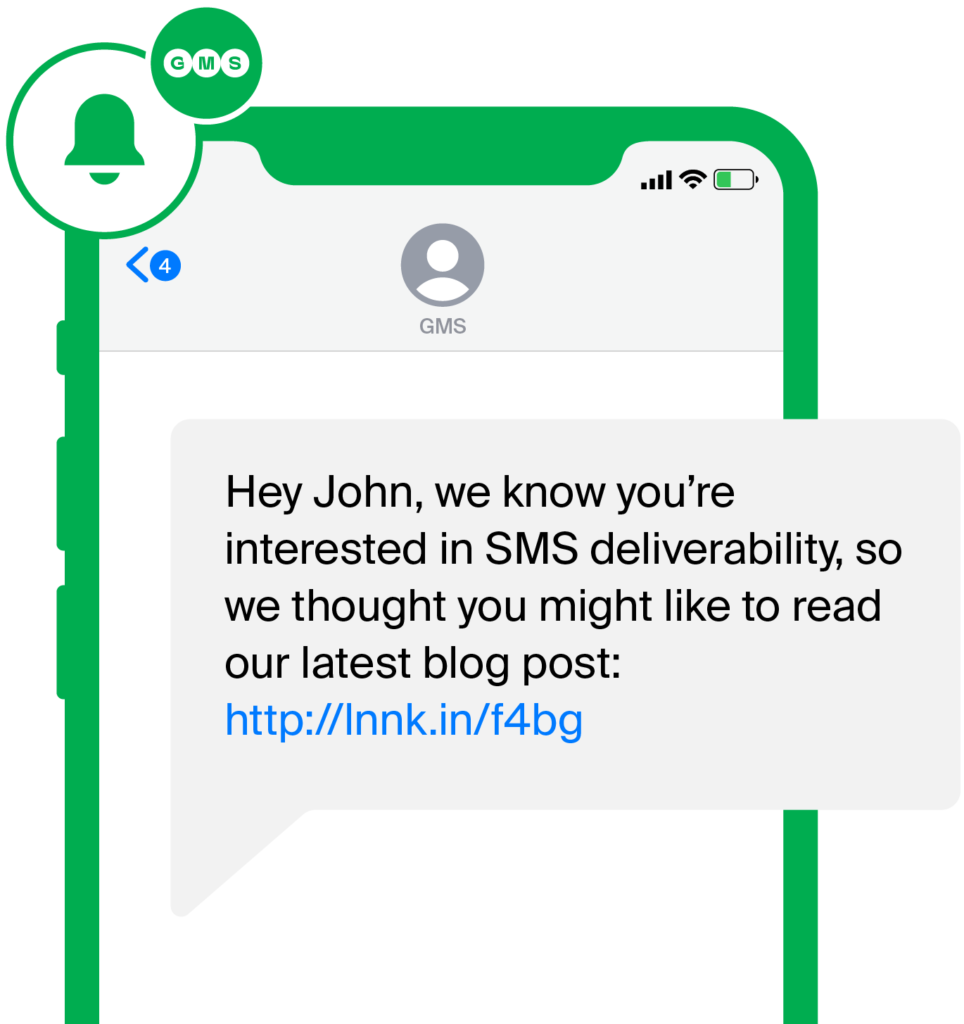Weeks of planning. Copywriting, editing and approval meetings. Drafts upon drafts upon drafts. After all this, you’ve finally set up your SMS campaign, and you’re clicking send. You’re feeling pretty confident as SMS has an open rate of 98% compared to the 20% that you get with email. But that fantastic open rate isn’t taking into account one factor — deliverability. You can write the best campaign and include a world-beating offer, but if you can’t deliver it to potential customers, then it’s just a waste of your time.
The Power of SMS
- 98% of SMS are opened
- 90% of SMS are read within 3 minutes of receipt
- 97% of SMS are read within 15 minutes of receipt
- 83% of people will reply to a business SMS within 30 minutes
- 51% of people trust SMS more than email
That’s why today we’re going to tell you the biggest mistakes people make when sending SMS campaigns, so you’ll know what to avoid in the future.
Don’t Waste Your Money
Most of the time that your SMS is not delivered, it’s probably due to one of two reasons — the number is inactive or incorrect, or the carrier has decided to block the message. Let’s talk a little bit about incorrect numbers first.
Your lists are constantly being chipped away by the attrition of data. According to this infographic from Inside View, B2B data decays at a whopping 70.3% every year! What do we mean by decay? Well, your lead could move jobs, change phone numbers or block your messages as spam. In essence, we’re talking about data that is right now the wrong way to contact somebody.
To prevent data decay, you’ll want to make sure that you’re:
- Getting rid of duplicate contacts — sending the same message to the same person multiple times will make them much more likely to report you as spam and block your messages
- Verify your contacts — make sure every contact number you have is a valid number, and specifically a mobile device number and not a landline
- Clean out dead/bad data — take a look at recent campaign reporting. If any contact has been reported as undeliverable for three sends in a row, it’s unlikely they’re good data anymore
Many platforms will charge per message, so it can also be a real waste of your money to have bad data clogging up your database. Also, sending fewer messages at a time for your campaigns can sometimes be advantageous…
…Because You Shouldn’t Send Too Many Messages At Once
There are some good reasons for sending a large number of messages at once, for example, an emergency notification to let customers know you’ve been a victim of a cyber-attack or something similar. But it’s something you want to avoid doing for your marketing messages.
Carriers tend to restrict your deliverability depending on the type of number you’re sending from. There are a few kinds of numbers you can use to send your SMS campaigns — for more information on what these are and how they’re best used, you can read this blog article all about them. But for now, we’ll just talk about how they affect deliverability here:
- Short Codes — these are short numbers, often 5-6 digits in length, that will allow you to send messages rapidly and in bursts. The downside is that these are limited to a single country and are often more expensive.
- Long Numbers — these numbers are normal length, officially registered numbers that must be sent at a slower rate. There are fewer restrictions on what you can send, and you’re able to communicate globally.
Some services will allow you to spread your send over a longer time frame, ensuring they are sent within the restrictions of the carriers. Also, don’t discount the ability to reply to your messages. Carriers will see that people are receiving and replying to your messages and view your SMS activity as more trustworthy, which can increase your deliverability too.
Sending an SMS from your handset is called P2P (Person to Person). With this method you will only able to be send at a limited, slower rate as carriers often limit their use to the volume you might see from a normal phone user. SMS delivery rates can plummet after the first 200 or so messages on any given day. Doing this doesn’t make much business sense, as it’s slow and manual and the return on your time investment is unlikely to be positive.
Don’t Just Ask For Opt-In Once
Double opt-in is a very strong tactic in SMS campaigns. What this means is that when somebody gives you their details, you then automatically send a message to them, which they must reply to in order to be included in your SMS lists. This is really good for several reasons.
Firstly when somebody double opts-in, you know you have the right number. If a user makes a typo when entering their number at first sign up, then they won’t get the second opt-in confirmation text, which will mean their number isn’t added to your list. This will save you money on sending and also keep your data clean.
Secondly, somebody has to be pretty engaged to sign up for a list and then reply to a text to confirm their sign up. This gives you a great list full of people engaged enough to opt-in twice to receiving messages from you.
Don’t Be Afraid To Get Personal
Personalising your messages is a great way to create trust and engagement with your contacts. It can go a long way to use somebody’s name or to make sure you’re not talking to them about a product they can’t use. For example, if you’re a supplement company, you don’t want to market a bulking product to people trying to lose weight.

Key Account Manager at GMS
Keeping your communications frequent, personal and relevant to the needs and interests of your contacts is essential to running a great campaign.
This might all sound like a lot of work, but you can often cut that out by using CRM software like Hubspot or Salesforce and automating the process. You can even ask people when they sign up what kind of products they’re interested in. Most people will be happy to tell you.
Don’t Use Links You Don’t Control
Before a contact receives your SMS, it will be reviewed by the carrier. One of the things that they will be looking for is the domains of any links included in your message and whether they are trustworthy or not. In order to keep under the 160-character limit of an SMS message, most of us will be using a URL shortener, but if you do so, you’ll need to make sure that you control that domain.
Say, for example, that you just use a public URL shortening service. They’re a trustworthy company, and they provide a good service, so it seems fine. But unfortunately, many other companies use these services, and some of them might be less than reputable. If the carriers see your message with a link to a domain that has been present in spam messages, it’s possible they’ll block them from being received.
Also, if the URL shortener has a technical outage at one point and the link goes to a dead page, the carrier may stop delivering the entire tranche of messages, even if the shortener comes back online. Ideally, you want to shorten your own URLs in-house to avoid these issues.

Keep It Above Board and Avoid Grey Routes
Almost all companies will need to use a service to send their messaging campaigns, but not all services were created equal. Some will use what are called grey routes to deliver messages. Grey routes are an industry term for sending messages outside of authorised networks to avoid paying network operator fees. Often these providers will have very attractive rates for sending messages, but this is because they are not paying the required fees. The majority of carriers have systems in place to detect grey route traffic, meaning that your messages will be blocked by the network and never delivered. Make sure that the service you’re using doesn’t use grey routes by picking a reputable provider.
To get started talking to us about our messaging services and what we can offer, click here to talk to an expert.

